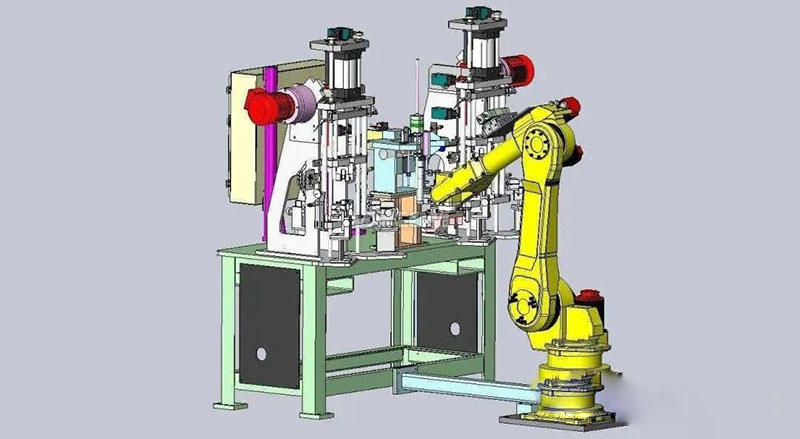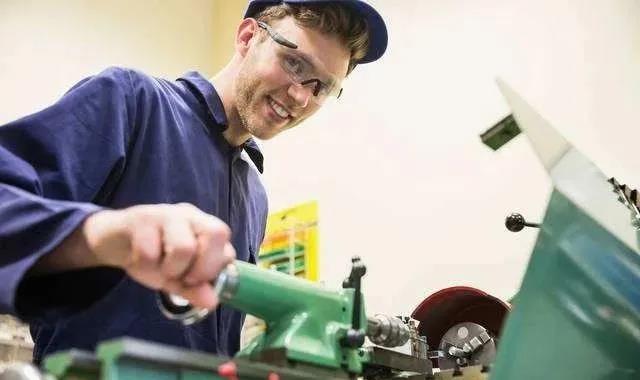Insiders tell you, what is the non-standard mechanical design and how?
2021.10.29
 What is the specific design of non-standard machinery? Simply put, it is the design of non-standard equipment, non-standard parts, and non-standard tooling. For example: C616, C620, C630, C6125, M7475, B650, M131 and other equipment are already well-known standard equipment in the machining industry. Then there are many special equipment that are not included in the standard equipment, which is the work goal of non-standard design workers.
What is the specific design of non-standard machinery? Simply put, it is the design of non-standard equipment, non-standard parts, and non-standard tooling. For example: C616, C620, C630, C6125, M7475, B650, M131 and other equipment are already well-known standard equipment in the machining industry. Then there are many special equipment that are not included in the standard equipment, which is the work goal of non-standard design workers.
Non-standard machinery is a mechanical product without a finalized design. Generally, it is not directly available in the market and needs to be customized from the manufacturer. Machines with the same function may be different in size and shape. In addition, non-standard equipment is also greatly affected by the user's site, and the design of the equipment is often restricted by some conditions of the user. Although there is no standard to follow the shape, there are still standards for the design of the mechanism and parts.
Employment position:
Non-standard design work is a very hard work. First of all, you must have a good practical foundation. You have to be able to do the same in turning, milling, planing, grinding, and tongs. Of course, the more the better, the art is not pressed? With these foundations, you can no longer speak layman's terms in machining, and at a higher level, you can become a machining technician. Then, you can study theoretical courses and master the professional theoretical knowledge of non-standard design, such as material mechanics, theoretical mechanics, mechanical drawing, descriptive geometry, electrical engineering, computer introduction, etc., etc. Of course, you can go to school first, then practice, or practice first and then study.

Non-standard design work involves a wide range of areas. Because the nature of the profession is to solve all aspects of the problem, non-standard design workers are required to have a wide range of knowledge and knowledge. The more knowledge, the more effective the work, and the more knowledge. The more experience, the more ways to solve the problem, the faster and more accurate. (There is no guarantee that the equipment that is done is not used or scrapped, there are many examples of this)
The prospect of non-standard design work has always been very good. The technological progress of this world cannot be separated from non-standard design work. In enterprises, it is the blood of enterprises (there are many such descriptions), and in society, it is A pioneer of technological progress, it is also very honorable to do this job. When you get the certificate of XX invention, what makes you feel masturbated is that you have made a little achievement for the society to promote technological progress.
Purpose of non-standard design:
1. Improve product quality;
2. Improve efficiency;
3. Ensure production safety.
Non-standard design essentials:
1. The necessary design manuals can be downloaded in electronic version online. The manual is your best teacher. You can find the knowledge you want from the book. For example, gears are required for design, and the design gear parameters can be found in the manual. If you encounter any problems, find the manual first.
2. Download some catalogs of mechanical equipment for you to broaden your mind.
3. The equipment movement track is nothing more than a straight line or a rotation. If you master these mechanical principles, you can design non-standard equipment by combining electrical, pneumatic and hydraulic pressure.
4. It is best to download some standard parts of cad version and put them in the design center of cad for easy pasting and use and improving work efficiency.
Non-standard design preparation:
1. Understand the purpose of the equipment, is it processing equipment? Or test equipment? Or tooling fixtures.
Processing equipment: First, ensure the processing accuracy, and secondly, the loading and unloading is convenient, accurate and fast. Test equipment: Provide corresponding power, test necessary test points, how to combine with electricity, display data and read data. Tooling and fixture: how to limit the degree of freedom, fast and reliable loading and unloading.
2. On-site inspection to understand relevant data.
a) Equipment related data, such as external dimensions, corresponding drawings and dimensions;
b) The relevant data of the equipment installation site, whether it interferes with other equipment;
c) Electrical related data used for equipment installation, how much volts is the voltage, and how much power can be provided;
3. Prepare some industry standards and product-related data of online manufacturers. Each manufacturer will provide data such as principles and installation dimensions to prepare for drawing.
4. Come up with the plan: The feasibility report of the plan includes the following contents:
a) The efficiency, accuracy, etc. of the original equipment, explaining why it was updated or increased;
b) Features of the new equipment;
c) Production costs, including material costs, labor costs, and outsourcing processing costs;
d) The cost recovery period is to recover the investment within half a year and do it immediately; it can be done if the investment is recovered within one year. Including how much labor costs are reduced, the value created by improving efficiency, etc.
e) Estimated production cycle.
Designing process:
1. Sketch the design in your head, give full play to your imagination, divide the equipment into several large pieces, and how each piece is structured and connected.
2. Drawing, implement the idea on the drawing. First draw the general drawing, and then draw the part drawing. It is convenient to change the design and ideas.
3. Intensity verification, those with experience can directly select materials, and those with less experience should perform simple verification to prevent major mistakes.
4. The calibration is mainly to check whether the parts interfere, whether it is convenient to install, use, and maintain.
5. Sort out the drawings and calculate the weight of the parts for quick external quotation. The verified price of the processed parts can be 2 to 3 times the weight of the material × the price of the material.
Market research inquiry:
Ask for quotations on the market for the designed product sub-components and parts, and try to use common parts as far as possible to facilitate maintenance and exchange.
Design advice:
1. The things designed by novices are definitely not perfect enough. You should consult more old engineers. Generally, they will give you guidance to improve yourself. Those with a strong sense of responsibility may be worried and can't sleep. Everyone has come from this step. As long as you use your heart, there will be no problem. Even if you make a mistake, it is inevitable. It depends on how you make up for it.
2. The machinery industry is not developing rapidly like the electronics industry. The reason is very simple. There are few principles available. The development is also driven by the electrical industry. The development of machinery is effectively combined with electricity, pneumatics, and hydraulics. The development of new materials has brought the advantages of lightness and durability to machinery. The mechanical principle is the same as the musical notes. There are only a few, whether the equipment or the product is good, just how to match it. Look at other people’s designs, understand the design concept, and apply it to your own design. This is not plagiarism. It's called an application.
3. The designed things must be convenient for maintenance, as small as there is no place to put the wrench, it is impossible to use hexagon socket bolts. It is convenient to process. When designing, consider processing issues. For example, try not to drill on the arc surface. If you must drill or go through the center, or first process the platform and then drill.
4. After the first draft of the design is out, it must be optimized. Is there a simpler way or more advanced parts to replace it. For example, to make an electric flat car, there are DC and AC drives, the AC is not very safe, and there is electric line transmission, the DC cost is high, a rectifier device is required, but a battery can also be used. The speed required to transport the flat car is very low, 60m/min, and the motor speed is very high. Usually, the gearbox is used to change the speed. However, it is learned on the Internet that the speed of the DC brushless motor can be 40r/min. It reduces investment, reduces failure points, and reduces maintenance costs. This is innovation.
Previous:How to eliminate the shape error caused by curved surface processing?
Next:Three turns of the screw takes half a turn. Do you know why?
Related Information
- Industry news
- The tap or drill bit breaks in the hole, how to fix it?
- Why do airplanes use rivets instead of welding?
- Why are engineering drawings all blueprints?
- How is a ping pong ball made? It turns out that it is made of two pieces of plas
- What to do if quality is abnormal? Doing these 3 things well is the key!
- Weekly News 9.7-9.13
- Huawei's three-fold screen is approaching, and the domestic supply chain is wait
- Innovative application of digital twin technology in integrated die-casting prod
- 5 types of carbide cutting tools, what are the differences? Save this article an
- Global manufacturing PMI in June was 49.5% | Weekly News 7.6-7.12
- Raw material defects | Machining special operations and practical cases 109
- No wonder Toyota stamping is so good: a day in the life of a Toyota stamping sho
- Analysis on the development trend and demand of China's mold industry
- How many types of sealing rings are there in machinery? What are they used for?
- Hangfa, Hangfa, a scar on the hearts of machine processing workers
- How to mill a large arc surface with a small cutter?
- Dynamics of the processing center of the process! What is the fundamental reason
- 500 ° C ultra -strong aluminum alloy! This problem is overcome
- How much do you know about the hometown of machine tools and molds, how much do

 BACK
BACK MT HOME
MT HOME Navbar
Navbar